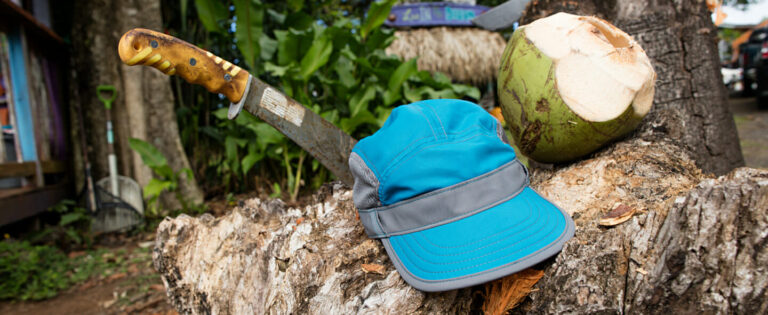“Yuck! Keep your stinky feet away from me!” Yeah, we’ve all been on the receiving end of one of these rather unpleasant statements after a long foot march. But, it’s not our fault, right? All that moisture and bacteria have been hard at work all day, transforming our socks into disgusting, foul-smelling beasts that you wouldn’t want to touch with a ten-foot pole. Not to mention all the mud, debris and other stuff that have found their way into our shoes and taken quite a toll on our socks. It’s high time we wash them! But how? What should we keep in mind when washing outdoor socks? I’m glad you ask! Here’s our how-to guide on washing outdoor socks.
General tips on how to wash outdoor socks
Don’t worry, washing socks isn’t as complicated as you may think. There are, however, some important things to keep in mind. Let’s start with a few general tips on how to wash your socks properly. The guiding principle behind sock washing is simple: Always pay attention to the specifications provided by the manufacturer! This is incredibly important when it comes to functional fabrics because they require special care.
Turn your socks inside out before washing. Why? Sure, the socks may look dirty on the outside, but it’s even more important to get rid of all the odour-producing bacteria and skin particles on the inside as well. When it comes to the wash cycle, you can err on the side of caution and choose a gentle cycle if you don’t want to use a regular cycle. But, always have a look at the manufacturer’s specifications beforehand.
Here’s another tip – this time on the mystery of the disappearing sock. Whether the socks are stolen by mischievous goblins or travel through a wormhole in the drum to another dimension, I guess we’ll never know. Fortunately, there is a way to stop the socks from disappearing.
Use mesh wash bag to wash your socks. This will keep the socks together and protect more sensitive functional socks (or fine merino socks) from damage caused by the drum or zippers, buttons or rivets on other garments.
How to wash different kinds of socks
Now, we’re getting down to business! Regardless of whether your socks are made of wool, synthetic, cotton or merino wool, there’s no reason to wash them at an extremely high temperature to get them clean. Although the temperature does depend on the material, 30°C is plenty for merino wool, while a maximum of 40°C is sufficient for functional synthetic materials.
Even at low temperatures, modern detergents are capable of thoroughly washing your socks, just as advertised. Temperatures above 40 degrees are not just unnecessary – they can cause permanent damage to the fabric. Plus, washing at lower temperatures will save you money and protect the environment as well. So, as is so often the case, less is more.
Which detergent for outdoor socks?
What about detergent? Well, there are several options to choose from out there. The main thing is that you steer clear of additives such as bleach, chlorine, optical brighteners or fabric softeners. That being said, using universal or 3-in-1 laundry detergents is simply not an option due to the aggressive additives and brighteners contained in these products. The gentlest alternative to these products is a delicate laundry detergent. This is a gentle detergent solution that acts like a kind of foamy airbag that protects the socks during the spin cycle.
Delicate wash detergents are highly recommended for functional textiles because they are gentle on the fabric and don’t contain any additives that could damage the fabric or its properties. Personally, I like to use a colour detergent every now and again. It may not be quite as gentle as a delicate detergent, but it doesn’t contain any bleach or similar additives. Plus, it prevents discolouring and colour bleed. But keep in mind that colour detergent is not suitable for wool or silk!
Merino socks are usually incredibly easy to care for. The only thing you need to keep in mind is that you should wash them at 30°C and use the gentle cycle, if possible. The best option here is to use delicate or wool detergent. The latter should always be used for socks made of “regular” wool because it doesn’t contain protease. Protease is a proteolytic enzyme that permanently damages wool fibres.
If you have a foot fungus, there are special medical and anti-fungal detergents that combat the fungus on the sock. The temperature should be at least 60°C, otherwise 10 to 15% of the spores will survive if washed below this temperature. But, always consult the care instructions provided by the manufacturer beforehand.
Why no fabric softener?
We’re all fine with no bleach, no chlorine, etc, but why no fabric softener? After all, the stuff usually smells pretty fantastic, and the clothes feel so soft and cuddly afterwards. Well, it all comes down to things called cationic surfactants that are in fabric softener. These surfactants form a film on the individual fibres, making the fibre surface appear smoother and feel softer. Sure, that sounds pretty terrific, but it’s really not – believe me.
The film reduces the ability of fabric to absorb moisture, which is definitely more of a negative when it comes to functional textiles. Your socks may be super soft, but your feet will be sweaty and smelly. Fabric softener also damages the elasticity of synthetic fibres, causing them to lose their flexibility, get stretched out and become brittle. A nightmare for the sock cuff!
The benefit that fabric softener has on your clothing is thus questionable at best. Some softeners also contain additives such as silicones, solvents, dyes or formaldehyde that have a harmful effect on the environment as well.
Can the sock go in the dryer?
To find out whether you can tumble-dry your socks, have a look at the manufacturer’s care instructions. In most cases, however, the socks can be tumble-dried at a low heat and delicate setting. However, I would always prefer air-drying them either outside on a clothesline or on a well-ventilated drying rack. That way, the socks will stay in tact and the cuff won’t lose its elasticity.
As you can see, washing your outdoor socks properly isn’t a big deal. If you keep a few little things in mind, even the most stubborn of stains and odours won’t stand a chance and your socks will be ready for their next adventure in no time at all.






